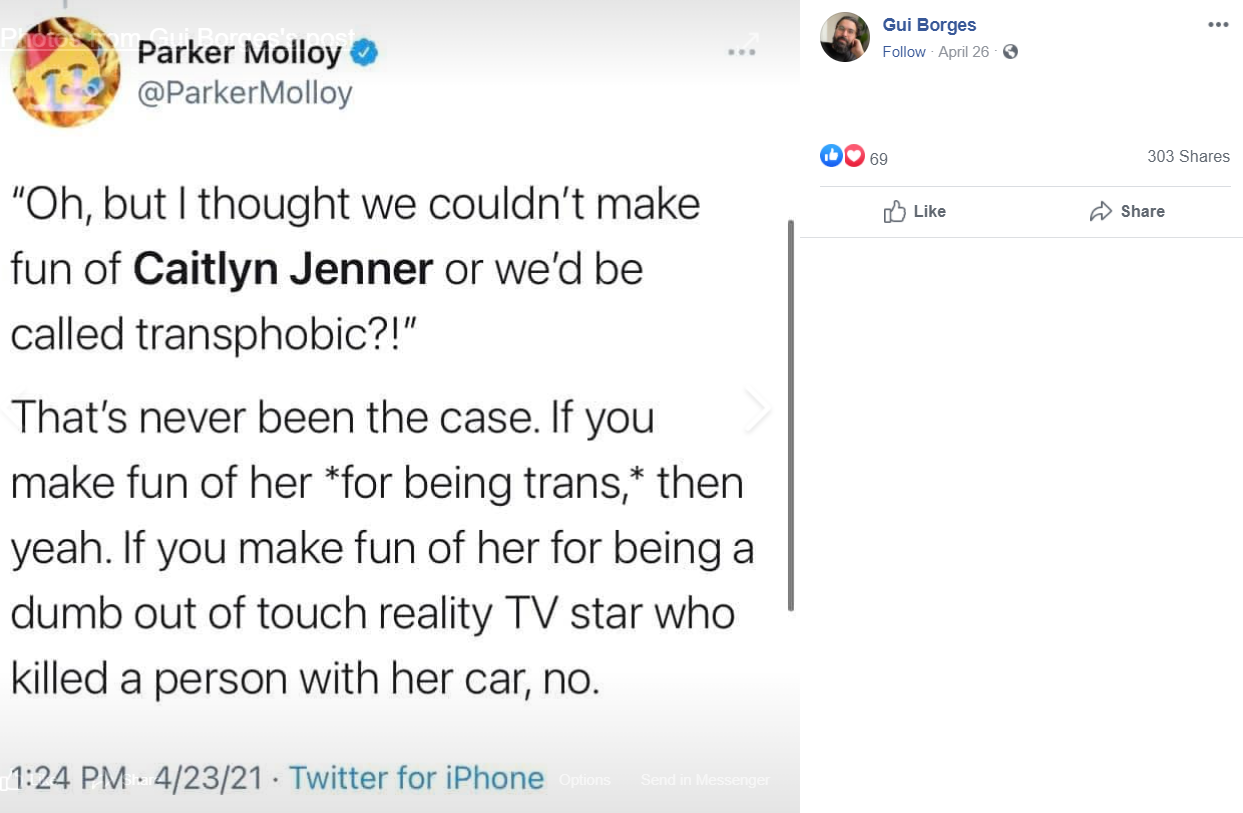On the night of the Academy Awards, Caitlyn Jenner, Olympic gold medalist and former reality TV star, engaged in a social media dispute with Democratic Congress member Ted Lieu of California.
It all started on Twitter, where Jenner criticized Governor Gavin Newsom for allowing district attorneys to release “dangerous criminals back on to our streets” as a way to gain support for her candidacy in the recall election.
A political commentator named Alex Mohajer retweeted Jenner’s criticism with a comment that fueled controversy.
Mohajer claimed that Jenner “literally killed someone in the streets 6 years ago and was released by a District Attorney.”
This claim quickly spread on Facebook, garnering over a thousand shares.
Facebook, in its efforts to combat false news and misinformation, flagged this post along with a similar one posted earlier.
However, let’s examine the facts surrounding the incident.
In 2015, Jenner was driving an SUV while towing an ATV on the Pacific Coast Highway in Malibu.
She rear-ended a Lexus, causing it to collide with oncoming traffic.
Tragically, the driver of the Lexus, Kim Howe, was struck by a Hummer traveling in the opposite direction and died instantly.
Jenner also hit another vehicle, a Prius, resulting in minor injuries to its driver.
Jenner expressed remorse, referring to it as a terrible accident.
She reached settlements with Howe’s family, the driver of the Prius, and the family in the Hummer, although the specific amounts remain undisclosed.
The Los Angeles County District Attorney’s Office launched an investigation into the incident, considering the possibility of charging Jenner with vehicular manslaughter.
At the time, this investigation stirred controversy due to the potential consequences.
If charged, Jenner could have faced at least a year behind bars.
Meanwhile, she had just announced her gender transition.
Ultimately, the DA’s office decided not to press charges due to a lack of evidence.
In order to prove vehicular manslaughter, one must establish ordinary negligence, which was absent in Jenner’s case.
Furthermore, the DA’s report stated that Jenner released the gas pedal and applied her brakes seconds too late before colliding with Howe.
Although she did drive below the speed limit, she did not break any other traffic laws.
Consequently, the DA declined to charge her with vehicular manslaughter.
Experts assert that prosecuting such cases is challenging.
The burden of proof entirely rests on the prosecution, who must demonstrate that the person responsible for the death drove negligently and violated traffic laws.
Factors like texting, applying makeup, or daydreaming while driving fall under ordinary negligence.
John McCurley, a criminal defense attorney and appellate law specialist, highlights the difficulty of proving these cases when only the driver can provide their account of the incident.
This lack of testimony poses a significant challenge.
Nabiel Ahmed, a criminal defense attorney in the Oakland Bay Area, emphasizes that prosecutors dedicate ample resources to their investigations.
In a case he handled involving vehicular manslaughter, the defendant was intoxicated and speeding, failing to engage the brakes before colliding with a parked car.
However, Caitlyn Jenner’s case differs significantly as she did apply the brakes and was driving below the speed limit.
Moreover, the investigation revealed she was sober at the time of the accident.
In conclusion, while it is accurate that the district attorney chose not to pursue charges against Caitlyn Jenner, it is false to claim she was released by a district attorney after killing someone.
Jenner was never charged or convicted in relation to the accident.
Therefore, we rate this claim as Mostly False.































